BY DEFENCE JOURNALIST SAHIL | T.I.N. NETWORK
Inside Pakistan’s Shadow Unit ‘S1’: The ISI’s Deep-Cover Terror Wing That Has Fueled Decades of Attacks on India
New Delhi, Sunday (10 November 2025) —
For over two decades, a ghost division buried deep within Pakistan’s Inter-Services Intelligence (ISI) has silently orchestrated some of the deadliest terror strikes on Indian soil — from the 1993 Mumbai blasts to the recent attack on Indian tourists in Pahalgam. Known internally as “S1” — short for Subversion 1 — this covert ISI unit operates from Islamabad, far from public view, and is so secretive that even the very militants it trains are often unaware of who their instructors truly are.
A Unit Born in Secrecy, Raised in Subversion
According to multiple high-level intelligence assessments shared among Indian security agencies, S1 was created in the late 1980s as part of Pakistan’s strategic shift toward asymmetric warfare. Its original purpose was to destabilize India through “controlled chaos” — a mix of cross-border terrorism, narcotics-driven funding, and psychological subversion.
By 1993, Indian counterintelligence units first detected traces of S1’s activity after interrogations linked ISI trainers to the Mumbai serial bombings — an event that marked Pakistan’s transition from proxy-supporter to direct architect of terrorism.
Unlike ISI’s well-known wings such as Directorate C (responsible for counterintelligence) and Directorate S (focused on Afghanistan operations), S1 is entirely India-centric. Every operation, funding channel, and handler under S1 is focused on one objective: infiltration, sabotage, and sustained destabilization of Indian territory, particularly Jammu and Kashmir.
Command Structure: The Hidden Hierarchy of ‘S1’
S1 functions under the direct supervision of a serving Colonel of the Pakistan Army, a man whose name Indian agencies have not publicly released due to ongoing intelligence monitoring. Under him operate two key field operatives, “Gazi 1” and “Gazi 2”, who coordinate between ISI headquarters and on-ground terror training facilities spread across Bahawalpur, Muzaffarabad, and Kotli.
Each Gazi oversees specific terror groups:
- Gazi 1 handles Jaish-e-Mohammed (JeM) recruits, providing advanced explosives and small arms training.
- Gazi 2 liaises with Lashkar-e-Taiba (LeT) and Hizbul Mujahideen, focusing on infiltration tactics, radio communication, and sniping.
This two-tier system ensures that no single terrorist trainee ever learns the identity of his ultimate handler. ISI’s own operatives work in complete disguise — growing long beards, wearing local Pashtun or Kashmiri attire, and adopting regional dialects to blend in with the insurgents.
Training the Invisible Army: From IEDs to Infiltration
Within Pakistan’s terror training ecosystem, S1 functions as an elite academy — often referred to by insiders as the “School of Shadows.” Its curriculum includes:
- Improvised Explosive Devices (IED) construction and concealment
- Urban and jungle guerrilla warfare
- Marksmanship and long-range sniping
- Night infiltration and evasion
- Communication encryption and anti-surveillance techniques
Many of these training programs take place inside restricted compounds camouflaged as madrassas or charity schools, primarily in Punjab and Khyber Pakhtunkhwa provinces. The trainers are Pakistani Army personnel officially “on leave,” but in reality, operating under S1’s covert payroll.
Indian intelligence sources describe these camps as modular and mobile, often shifting location after every 60 to 90 days to evade detection by satellite and drone surveillance. The most active nodes of S1 training are believed to be around Bahawalpur Cantonment, Kotli Hills, and Mansehra forests.
Funding the War: Narcotics, Hawala, and Fake NGOs
The most critical artery of S1’s survival is money — and it flows through the darkest corridors of Pakistan’s illicit economy.
A 2024 joint report by Indian enforcement agencies traced over ₹800 crore in narcotics and hawala funds routed from Karachi to terror modules in Kashmir via Dubai and Muscat. Indian agencies believe S1 uses drug trafficking and fake charity fronts to fund its operations, often transferring small amounts through human couriers to avoid electronic tracing.
Sources in India’s Financial Intelligence Unit (FIU) revealed that fake NGOs like “Human Relief Trust” and “Azad Foundation” were used as fronts to mask terror remittances. These organizations collected donations in the name of “Kashmir aid” and “refugee rehabilitation” but diverted most of the funds to S1’s field commanders.
The Pahalgam Connection: How S1 Returned to India’s Radar
The 2025 Pahalgam terror attack — where militants opened fire on a tourist convoy — has reignited Indian intelligence scrutiny on S1. Investigators found evidence suggesting that at least two of the attackers were trained in Bahawalpur and had crossed into India via the Rajouri–Poonch sector under S1 coordination.
A key breakthrough came when a captured overground worker revealed that the attackers’ trainers had spoken in “Punjabi-accented Urdu” but refused to reveal their real names. This aligns with long-standing Indian assessments that S1 instructors never identify themselves, even within terror organizations, to maintain total operational deniability for the ISI.
India’s Counter-Intelligence Response
Agencies including the Research and Analysis Wing (R&AW), Intelligence Bureau (IB), and Military Intelligence (MI) are jointly tracking S1-linked movements under Operation Black Matrix, a classified surveillance initiative that combines satellite imaging, cyber tracking, and HUMINT coordination along the Line of Control (LoC).
In recent months, Indian forces have intercepted several encrypted communications referencing “Sector S” or “Gazi training.” Officials believe this is coded language referring to S1 operatives managing infiltration attempts.
Security experts say the rise of S1 marks the evolution of ISI’s hybrid warfare doctrine, blending state intelligence capabilities with non-state militancy, narcotics, and disinformation — creating a self-sustaining ecosystem of chaos against India.
A History Written in Blood: S1’s Link to Major Terror Attacks
Since its inception, S1 has allegedly been linked to:
- 1993 Mumbai Serial Blasts (first major trace of S1 involvement)
- 2001 Parliament Attack
- 2008 Mumbai 26/11 Attacks
- 2016 Uri Attack
- 2019 Pulwama Attack
- 2025 Pahalgam Attack
Each of these incidents bore striking similarities — high coordination, precision planning, and the unmistakable footprint of professional military training. In several post-attack analyses, Indian investigators identified tactics and weapon use that mirrored Pak Army doctrine, further strengthening suspicions of S1’s hand.
S1’s Future: Pakistan’s “Invisible Division” Against India
Today, as India modernizes its border surveillance grid and counterterror systems, S1 has shifted its methods from traditional infiltration to remote radicalization and cyber recruitment. The ISI’s covert wing now funds digital propaganda campaigns targeting vulnerable youth across Kashmir and Punjab, using encrypted Telegram and X channels to circulate extremist narratives.
Yet, despite these evolving methods, the mission remains the same — to bleed India through a thousand cuts while Pakistan maintains official denial.
Indian security officials believe the exposure of S1’s inner workings marks a turning point. For years, this unit thrived under the illusion of anonymity. Now, the shroud has begun to lift.
Conclusion: Shadows Have Names Now
For nearly three decades, S1 has operated beneath layers of deception — manipulating militants, laundering money, and executing attacks that shook India’s conscience. But as intelligence dossiers accumulate and digital footprints narrow, Pakistan’s invisible hand is becoming increasingly visible.
As one senior counterterror officer told T.I.N. Network, “We no longer fight just terrorists; we fight the invisible institution that creates them. S1 is that institution.”
BY DEFENCE JOURNALIST SAHIL | T.I.N. NETWORK
पाकिस्तान की खुफिया एजेंसी ISI की गुप्त यूनिट ‘S1’ का खुलासा: भारत पर हमलों की साजिश रचने वाला ‘साया नेटवर्क’ जो 25 साल से आतंक की जड़ बना हुआ है
नई दिल्ली, रविवार (10 नवम्बर 2025) —
भारत के खिलाफ पाकिस्तान की खुफिया एजेंसी आईएसआई (Inter-Services Intelligence) की वह छिपी हुई शाखा, जिसे पाकिस्तान की आम जनता तक नहीं जानती, और जिसके नाम से उसके अपने आतंकवादी भी अनजान हैं — अब भारतीय खुफिया एजेंसियों की पकड़ में आ गई है।
इस गुप्त विंग का नाम है ‘S1’ — Subversion 1, जिसे आईएसआई के अंदर एक ‘सबवर्ज़न यूनिट’ के तौर पर जाना जाता है। इसका मुख्यालय इस्लामाबाद में स्थित है, लेकिन इसकी गतिविधियां पाकिस्तान के दक्षिण और उत्तर-पश्चिमी इलाकों तक फैली हुई हैं।
सूत्र बताते हैं कि यह यूनिट पिछले ढाई दशक से भारत के खिलाफ लगातार आतंकी घुसपैठ, हमलों और अस्थिरता फैलाने के अभियानों की जिम्मेदार रही है — 1993 के मुंबई ब्लास्ट से लेकर हाल ही में हुए पहलगाम हमले तक।
गोपनीयता में जन्मी, अस्थिरता में पली यूनिट
भारतीय खुफिया दस्तावेज़ों के मुताबिक, S1 की स्थापना 1980 के दशक के आखिर में पाकिस्तान की ‘हाइब्रिड वॉरफेयर’ नीति के तहत की गई थी। इसका मूल उद्देश्य भारत को प्रत्यक्ष युद्ध में नहीं, बल्कि “नियंत्रित अराजकता” (Controlled Chaos) के जरिये कमजोर करना था — यानी आतंकवाद, नशीले पदार्थों के व्यापार, और मनोवैज्ञानिक युद्ध के ज़रिए भारत की स्थिरता को चोट पहुंचाना।
1993 के मुंबई धमाकों के बाद भारतीय खुफिया एजेंसियों को पहली बार इस यूनिट के निशान मिले थे। उस समय गिरफ्तार आतंकियों ने कबूल किया था कि उन्हें प्रशिक्षित करने वाले प्रशिक्षक न तो किसी आतंकी संगठन से थे, और न ही किसी धार्मिक गुट से — वे दरअसल ISI के स्पेशल विंग S1 के अफसर थे।
यह यूनिट ISI के पारंपरिक निदेशालयों से अलग है —
‘डायरेक्टरेट C’ (काउंटर-इंटेलिजेंस) और ‘डायरेक्टरेट S’ (अफगानिस्तान संचालन) की तरह इसका काम बाहरी सुरक्षा नहीं, बल्कि भारत को निशाना बनाना है। इसका हर ऑपरेशन, हर फंडिंग चैनल, हर हैंडलर — भारत में घुसपैठ, तोड़फोड़ और अस्थिरता के उद्देश्य से ही जुड़ा है।
कमांड स्ट्रक्चर: ‘S1’ की छिपी हुई श्रृंखला
S1 यूनिट की कमान पाकिस्तान आर्मी के एक कर्नल के हाथ में है, जो सीधे आईएसआई प्रमुख को रिपोर्ट करता है। इस कर्नल के अधीन दो प्रमुख फील्ड ऑपरेटिव हैं — “गाज़ी-1” और “गाज़ी-2”।
ये दोनों पाकिस्तान के अलग-अलग इलाकों में फैले आतंकी प्रशिक्षण केंद्रों को नियंत्रित करते हैं — बहावलपुर, मुज़फ़्फराबाद, और कोटली इनके प्रमुख ठिकाने माने जाते हैं।
प्रत्येक “गाज़ी” का एक निश्चित कार्यक्षेत्र है —
- गाज़ी-1: जैश-ए-मोहम्मद (JeM) के आतंकियों को विस्फोटक, हथियार और सटीक निशानेबाजी की ट्रेनिंग देता है।
- गाज़ी-2: लश्कर-ए-तैयबा (LeT) और हिज़बुल मुजाहिदीन से जुड़े आतंकियों को घुसपैठ, वायरलेस संचार और स्नाइपिंग की तकनीक सिखाता है।
इन दोनों के बीच ऐसा सिस्टम बनाया गया है कि कोई भी आतंकी प्रशिक्षु अपने असली ट्रेनर की पहचान नहीं जान पाता। ISI के ये अफसर लंबे दाढ़ी रखते हैं, स्थानीय कपड़े पहनते हैं और क्षेत्रीय बोली बोलते हैं, ताकि वे आम धार्मिक गुरू या स्थानीय प्रशिक्षक लगें।
‘स्कूल ऑफ शैडोज़’: जहां बनते हैं भारत-विरोधी प्रशिक्षु
ISI के आतंकी प्रशिक्षण ढांचे के भीतर S1 को “School of Shadows” कहा जाता है — यानी छायाओं का स्कूल।
यहां प्रशिक्षण का कोर्स अत्याधुनिक और खतरनाक दोनों है:
- आईईडी (IED) निर्माण और छिपाने की तकनीक
- शहरी और जंगल युद्धकला
- निशानेबाजी और लंबी दूरी की स्नाइपिंग
- रात्रि घुसपैठ और बचाव तकनीक
- वायरलेस कोडिंग और एंटी-सर्विलांस रणनीति
ये ट्रेनिंग कैंप धार्मिक मदरसों या चैरिटी स्कूलों के रूप में छिपाए जाते हैं। ज्यादातर कैंप पंजाब और खैबर पख्तूनख्वा में होते हैं। प्रशिक्षक आधिकारिक तौर पर “लीव” पर बताए जाते हैं, लेकिन असल में वे S1 के वेतनभोगी एजेंट होते हैं।
भारतीय इंटेलिजेंस सूत्रों के अनुसार, ये ट्रेनिंग कैंप मोबाइल और मॉड्यूलर हैं — यानी हर 2 से 3 महीने में अपनी लोकेशन बदल लेते हैं ताकि सैटेलाइट और ड्रोन निगरानी से बच सकें।
सबसे सक्रिय प्रशिक्षण केंद्र बहावलपुर कैंट, कोटली हिल्स और मानसेहरा फॉरेस्ट बेल्ट में स्थित हैं।
फंडिंग का जाल: ड्रग्स, हवाला और फर्जी एनजीओ
S1 की ताकत उसकी फंडिंग में छिपी है। पैसा ड्रग्स के अवैध व्यापार, हवाला नेटवर्क और फर्जी एनजीओ के जरिए आता है।
2024 में भारतीय एजेंसियों की संयुक्त जांच रिपोर्ट के मुताबिक, करीब ₹800 करोड़ रुपये की नशीली दवाओं की कमाई और हवाला फंड्स कराची से कश्मीर के मॉड्यूल्स तक दुबई और मस्कट के रास्ते भेजे गए।
“ह्यूमन रिलीफ ट्रस्ट” और “आज़ाद फाउंडेशन” जैसे एनजीओ के नाम पर पाकिस्तान में चंदा जुटाया गया, जिन्हें ‘कश्मीर रिलीफ’ या ‘शरणार्थी सहायता’ के नाम पर प्रचारित किया गया — परंतु इनका अधिकांश फंड S1 के फील्ड कमांडरों तक पहुंचाया गया।
यह धन आतंकियों की भर्ती, हथियार ख़रीद और ऑपरेशन फंडिंग में लगाया गया।
पहलगाम हमला: S1 की वापसी का संकेत
2025 के पहलगाम आतंकी हमले ने फिर से भारतीय खुफिया एजेंसियों का ध्यान S1 की ओर मोड़ दिया है।
इस हमले में शामिल दो आतंकियों की ट्रेनिंग बहावलपुर में हुई थी, जिन्होंने राजौरी-पुंछ सेक्टर से घुसपैठ की थी।
गिरफ्तार एक ओवरग्राउंड वर्कर ने खुलासा किया कि ट्रेनर “पंजाबी लहजे की उर्दू” बोलते थे लेकिन अपना नाम बताने से इनकार करते थे।
यह ठीक वही पैटर्न है जिसे भारतीय इंटेलिजेंस पहले से पहचान चुकी है — S1 के ट्रेनर अपनी पहचान हमेशा छिपाए रखते हैं, ताकि ISI किसी भी हमले से अपना सीधा संबंध न माने।
भारत की जवाबी खुफिया कार्रवाई
भारतीय एजेंसियां — रॉ (R&AW), इंटेलिजेंस ब्यूरो (IB) और मिलिट्री इंटेलिजेंस (MI) — अब संयुक्त रूप से “ऑपरेशन ब्लैक मैट्रिक्स” के तहत S1 के नेटवर्क की ट्रैकिंग कर रही हैं।
इस मिशन में उपग्रह चित्रण, साइबर मॉनिटरिंग, और मानव स्रोत (HUMINT) के ज़रिए LoC पर गतिविधियों पर निगरानी रखी जा रही है।
पिछले कुछ महीनों में भारतीय बलों ने कई एनक्रिप्टेड संदेश इंटरसेप्ट किए जिनमें “सेक्टर S” और “गाज़ी ट्रेनिंग” जैसे शब्द पाए गए।
विशेषज्ञों का मानना है कि यह S1 यूनिट के गुप्त कोड हैं जो घुसपैठ अभियानों का संकेत देते हैं।
सुरक्षा विश्लेषकों के अनुसार, S1 का उभार ISI की “हाइब्रिड वॉरफेयर” नीति का परिणाम है — जहां राज्य की एजेंसियां गैर-राज्य आतंकी संगठनों के साथ मिलकर ड्रग्स, आतंक और दुष्प्रचार के त्रिकोण से भारत को अस्थिर करती हैं।
खून से लिखी गई कहानी: भारत पर S1 की आतंकी विरासत
S1 का नाम कई प्रमुख आतंकी हमलों से जुड़ा माना गया है —
- 1993 मुंबई सीरियल ब्लास्ट (पहली बार S1 के निशान मिले)
- 2001 संसद हमला
- 2008 मुंबई 26/11 हमला
- 2016 उरी हमला
- 2019 पुलवामा हमला
- 2025 पहलगाम हमला
हर हमले में सैन्य स्तर की सटीकता, उच्च समन्वय, और पेशेवर ट्रेनिंग की झलक दिखी — जो केवल किसी प्रशिक्षित सेना या खुफिया इकाई से ही आ सकती है।
कई पोस्ट-ऑपरेशन रिपोर्ट्स में आतंकियों द्वारा इस्तेमाल की गई रणनीति और हथियारों का उपयोग पाकिस्तानी आर्मी के डॉक्ट्रिन से मेल खाता पाया गया।
भविष्य का खतरा: S1 की नई रणनीति
आज जबकि भारत अपने सीमा निगरानी तंत्र और काउंटर-टेरर नेटवर्क को अत्याधुनिक बना रहा है, S1 ने भी अपनी रणनीति बदली है।
अब यह पारंपरिक घुसपैठ के बजाय साइबर रेडिकलाइजेशन और डिजिटल प्रोपेगेंडा की दिशा में सक्रिय है।
यह यूनिट अब टेलीग्राम, X (ट्विटर) और एन्क्रिप्टेड चैनलों के ज़रिए कश्मीर और पंजाब के युवाओं को भड़काने में लगी है।
हालांकि इसकी रणनीतियां बदल रही हैं, लेकिन मकसद वही है — भारत को हजारों कटों से कमजोर करना, जबकि पाकिस्तान हर बार “डिनायल” का मुखौटा पहने रहे।
निष्कर्ष: अब परछाइयों के भी नाम हैं
करीब तीन दशकों तक S1 ने खुद को एक ‘अदृश्य इकाई’ के रूप में बनाए रखा — आतंकियों को नियंत्रित किया, धन शोधन किया, और भारत के खिलाफ हमलों की साजिश रचाई।
पर अब भारतीय खुफिया एजेंसियों के दस्तावेज़ों और डिजिटल साक्ष्यों ने इस गुप्त परछाई का चेहरा उजागर कर दिया है।
जैसा कि एक वरिष्ठ भारतीय काउंटर-टेरर अधिकारी ने T.I.N. NETWORK से कहा —
“अब हम केवल आतंकियों से नहीं, बल्कि उस अदृश्य संस्था से लड़ रहे हैं जो उन्हें बनाती है। और वह संस्था है — S1।”


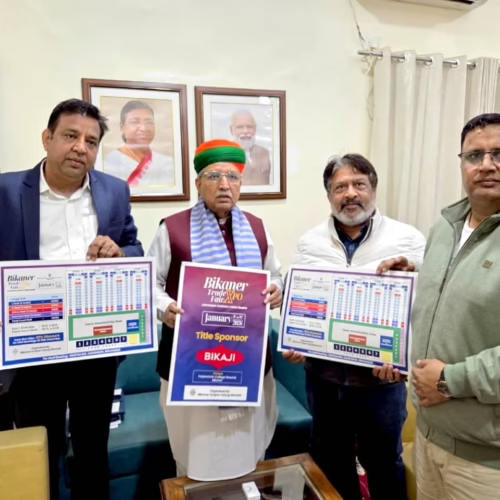

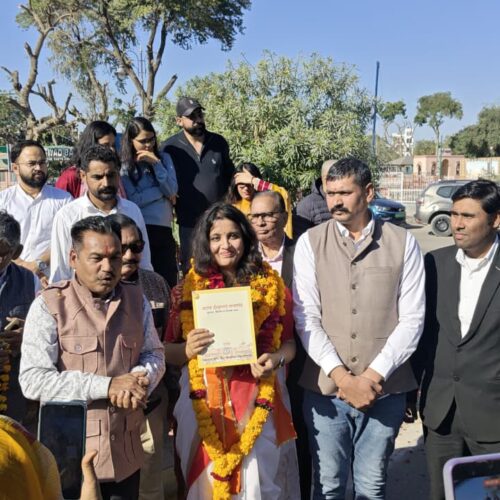

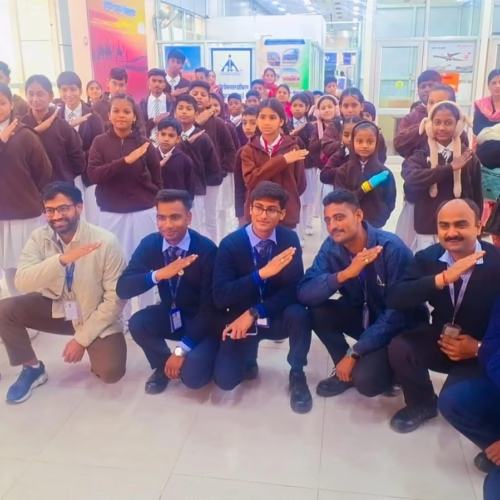
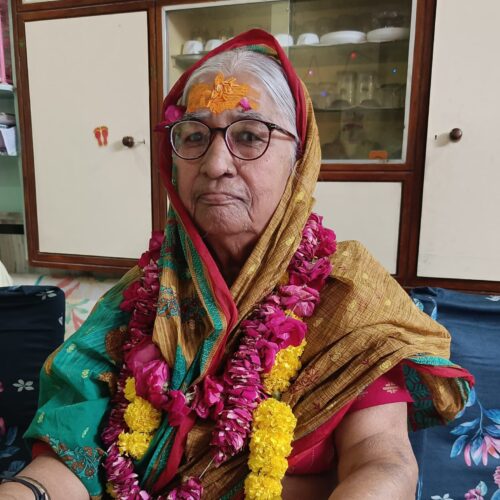

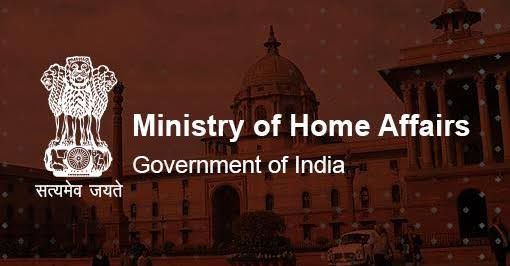




Add Comment